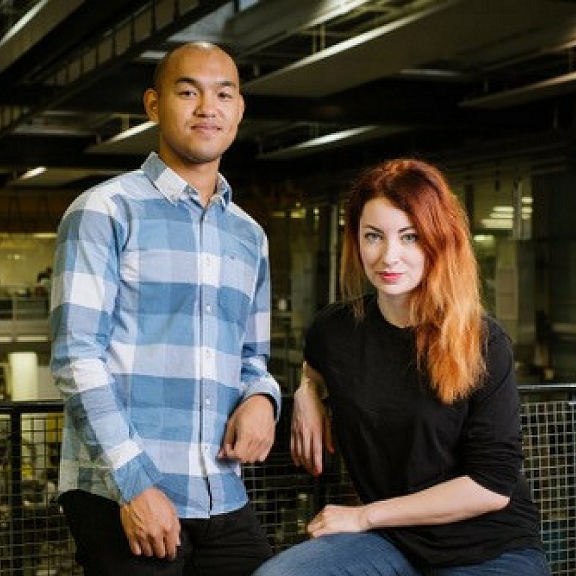
Aeropowder – Powered by feathers
Interview with AEROPOWDER, Green Alley Award Finalist 2018
Feathers are natural miracles. But their obvious beauty and lightness are accompanied by useful properties: They are strong, lightweight and thermally insulating. The British startup Aeropowder harnessed these properties to create a sustainable alternative to conventional insulation materials like polystyrene used for a huge amount of deliveries every day. Pluumo is the world's first sustainable packaging material made from waste feathers that have been cleaned and processed into a unique textile, before being covered in a biodegradable film for ease of handling. This rather unconventional idea made it to the finals of the Green Alley Award 2018, Europe’s first startup prize for the circular economy. Read here, why the world needs a product like pluumo.
# You created pluumo, a sustainable thermal packaging made from feathers. Why do you think, the world needs a product like that?
We can see that convenience food is picking up around the globe – with incredible growth rates all over Europe. However, many companies use EPS, PE-Foams or thermal foil to insulate their deliveries. The hidden environmental burden of this new meal-kit food trend is therefore huge. Our goal is it to supply the industry with an alternative, which is not only derived from an industrial waste stream, but it is renewable, biodegradable and can match the performance of EPS.
# What are the benefits of your product compared to similar solutions? And why is it so much more cost-efficient than polystyrene, which would be the conventional alternative to pluumo?
We are currently working on a small pilot-scale, where we can only manufacture several thousand units per day. However, to make a big impact and become a Europe-wide supplier of feather packaging we will need to scale – and this will then ultimately make us cost competitive. Currently we are 25% more expensive than EPS (like-for-like in terms of delivery volume), however we believe that this is actually reasonable, if you consider that this is a totally eco-friendly alternative.
# 3.1 million tons of waste feathers are generated in the EU – an enormous amount. At the moment you can manage well with local sources. But how will you get access to the EU market and secure your supply of feathers once you want to scale up your business?
We are in touch with several poultry processing factories all over Europe. The great thing is, that it’s a waste product for them and we can get as many feathers as we like at any locality. Over the last year we have now established several supply routes, which gives us more than enough feathers for now. However, we have a collection of over 100 requests from mostly China, India, Malaysia and the US of large poultry processors who would like to use our technology. Our vision is that this will become a locally produced solution for the whole world. At the moment we are however too small to serve the customers across Europe and supply them with pluumo. We have requests from Spain, Germany, France; not only from customer but also feather supplier side.
# Your material derives from animals and is based on the chicken industry, which does not necessarily have the reputation to be sustainable. What can you tell customers or consumers that might have concerns?
We have had this question a lot over the last year. There are two things that most people are not aware of: Currently feathers are converted into feed for the fur industry, which we believe is the worst possible scenario. It’s a waste material which has very little value and is considered as a necessary evil in poultry production. We appreciate feather properties and how amazing this material actually is and creating the best possible use for it: replacing packaging and avoiding landfill. Ideally, we would eat all less meat and we would have not this problem in the first place, but let’s face the music: Poultry consumption is growing around the globe and will be by 2020 the most popular source of animal protein worldwide. So the time is now to think about what to do with all the by-products of this growth. Further we only use feathers of birds which were treated well during their life. We did a survey with 150 vegetarians and vegans and surprisingly many of them preferred the idea of waste avoidance, rather than considering the origin of the material.
# Creating a sustainable product, one also has to consider the whole product life cycle. What happens to the pluumo liners and all their material parts – from the outside material to the feathers – once they become waste? Do you have an end-of-life solution?
We did a lot of test for re-using pluumo and even after 10 delivery cycles there was no impact on the thermal performance. That means if our customer has a take-back system in place we are able to either help them to recycle the liners, or to recycle them ourselves. However, in case they would end up in the municipal waste stream, the end-of-life options may vary. Obviously, our liners can be converted into energy in waste-to-energy plants, they can be composted in house compost or industrial composting facilities.
# In one short sentence: What does the circular economy mean to you?
Exploring the age of re-use!
Find the interviews with the other finalists of the Green Alley Award 2018 here: